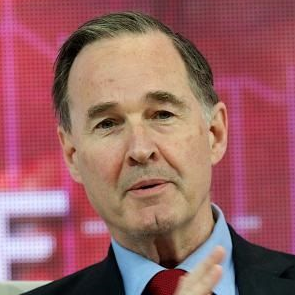U.S. Monetary Policy: Between Iraq and a Hard Place?
Is the U.S. Fed always free from political pressure — or might Iraq present an exception?
June 21, 2002
The odds are increasing that the Federal Reserve will delay the expected rise in interest rates for much longer than currently expected. Remarkably — although the Fed traditionally claims it only looks at the economy — the motives for this delay are both economic and political.
On the economic front, many Fed officials continue to harbor concerns about the underlying resilience of the U.S. recovery. They had expected demand to expand at an annual rate of only 3.0% during the first quarter of 2002 while the actual outcome was 2.7%.
They also do not see any compelling evidence that business-fixed investment is poised to recover. Furthermore, while they are stunned by the strength of consumer spending since October 2001, they wonder if it can be sustained.
Other economic factors have also crept onto the radar. Fed officials recognize that rising interest rates could puncture the mortgage refinancing boom in the United States — and thus undermine a key for continued healthy consumer spending.
Finally, they are impressed by strong productivity numbers, and do not perceive threats from rising wages or commodity prices.
The Fed is concerned about the signs of the dollar’s recent weakness. Yet, there have been many false alarms about a dollar correction in the past.
The dollar must drop further before anybody has real concerns about depreciation driving inflation higher. In short, Fed officials do not perceive any inflation risk in permitting the Federal Funds Rate to remain at 1.75% through the summer.
The main factor restraining monetary policy, though, is much more unusual for the Fed. It is political. Specifically, Fed officials are concerned about the risk of war in the Middle East — and the possibility of an oil price shock. They freely admit that oil prices are the major uncertainty in their economic outlook.
Fed Chairman Alan Greenspan is very sensitive to military risks — in part because he socializes with those in the Bush Administration who shape defense policy — including U.S. Secretary of Defense Donald Rumsfeld and U.S. Vice President Dick Cheney.
Mr. Greenspan knows that the administration is determined to launch an attack on Iraq during the next nine months. In such a scenario, the oil price could spike into the $35 to $45 per barrel range for a few months — and remain there until the United States defeats Saddam Hussein.
All of this is so intriguing because monetary policy has been shaped by factors outside the U.S. economy on three occasions since 1997. The first was the East Asian financial crisis of 1997 and 1998.
The second occasion was the Russian default of August 1998 — and its impact on the hedge funds through the bankruptcy of LongTerm Capital Management. The third was concern about Y2K-related economic disruptions in the run-up to the millennium transition in 2000.
During all three events, the Fed kept interest rates low in the face of a buoyant domestic economy and increasingly frothy equity markets. It did so to help the world economy cope with economic shocks that also promised to create major political tremors.
The decision to restrain interest rates because of risks associated with a war on Iraq looks to be the fourth time that the U.S. central bank has permitted non-economic factors to drive the conduct of monetary policy.
Read previous
Disaster for an Obscure Industry
June 20, 2002
